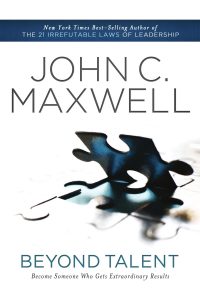
Thoughts from the Desk of Bob Repass…
First time, long time.
How many of you have heard that expression? Best I can tell it originated in our pop culture world back when talk radio was really beginning to take off. It is short for first time caller, long time listener.
We just wrapped up our annual summer event at NoteSchool, our Summer Summit, and the main theme throughout was to encourage the audience to really stay engaged not only with the many resources available at NoteSchool but with other like-minded note investors that you have in your network.
That is what brought the phrase “first time, long time” to my mind. Why does it take some people a long time to get fully engaged? It seems they tend to stay on the periphery “listening” but it takes a long time to take action and make that first “call” in to participate.
The best way to continue to grow your business is to stay engaged and be an active participant in the industry. Is there something holding you back and keeping you on the sidelines? In today’s environment there are unlimited opportunities to interact with others in the note business. Whether it is via social media channels such as Facebook and LinkedIn, attending trade shows and conferences such as NoteExpo www.noteexpo.com or attending and taking part in the numerous on-line webinars that are available, the options are endless.
I want to encourage each of you as we head into the summer season to get engaged or stay engaged. If you have been on the sidelines just listening, jump in and make that first call and participate. If you have already made the first call, make the second and the third!

Bob Repass
Managing Director
Stay up to Speed with Eddie
The Value of the Value-Add Relationship
by Eddie Speed
A few years after starting my note business, I was able to shift from just trying to survive to looking for ways to scale up my note business.
I was finally able to identify, target, and reach the kind of potential customers who created owner-financed notes and needed what I had to offer. I worked with people who bought and flipped used houses, people who bought big tracts of land then busted it up into smaller tracts (or as I say, “bought by the case and sold by the bottle”), and I even found a niche builder or two who specialized in owner financing.
But once I learned how to find the customer, I had to learn another important lesson – how to keep the customer.
As an entrepreneur, I had to make sure not to look at a potential client simply as someone who could enrich me. The only reason they were coming to me was so that I could enrich them, and if that didn’t happen then they’d find someone else who would. I had to offer a strong value proposition.
According to Warren Buffet, “Price is what you pay. Value is what you get.” There’s a reason why not everybody drives a Kia, and lots of people choose to pay more to drive a Lexus. To justify the higher price, Lexus has to offer more than a Kia. To hang on to customers over the long haul, I had to become the guy who brought extra value to the business relationship. This is what makes the difference between making a one-time deal or making an ongoing customer, which is how you build a business.
As I started to focus more and more on working with clients who had entire portfolios of 10, 50, 100, or more notes, I was able to take in-depth looks at the notes they had accumulated. Like I’ve said many times, I’m always on the lookout for recurring patterns. As I analyzed their existing notes, I recognized they were selling their properties to marginally qualified buyers. Because of the overall poor quality of the notes they had created (mainly by selling to customers with poor credit and a low down payment) I couldn’t deliver the best prices for them. When I gave them a fair market price for their notes they had created, I was constantly delivering bad news. I was in danger of becoming the guy who always left them feeling pain. I was like the principal that always had a paddle in his hand. And nobody wants to be around that guy!
I learned it never does much good to scold them for doing it wrong if you don’t show them how to do it right. I describe the situation with my pie analogy. They had been baking pies with a terrible recipe, and there was nothing I could do to fix their mess. I had to give them a new recipe for all the pies they baked from then on. At least I knew that these portfolio customers would be baking more saleable pies in the future. When I’m working with a customer who only has one note, I can’t fix their problem moving forward because there’s nothing left to fix.
As I looked at the notes of one customer in particular, I noticed that he tended to attract the same kind of buyers; people with poor credit. (As you know, this kept the resale value of his notes much lower.) He was an expert in several phases of the business – he was a rehabber who offered great houses, brought them to market, and sold over a hundred a year. Problem was, he was selling most of his houses to the same type of buyer. I was scratching my head as to why the majority of his buyers were so unqualified. So I dug a bit deeper into his marketing efforts.
As I looked at his newspaper ads, I realized what the problem was. He was running headlines like, “Bad Credit? No Credit? No Problem!” He was attracting people with low credit scores who couldn’t qualify for a bank loan. But even worse, he was scaring away people with good credit because they figured they’d get charged more to make up the difference for the buyers with bad credit. (People with good credit don’t go to the pawn shop to get a loan.) So I made a very simple suggestion. I told him to get rid of that headline and change it to something like, “Seller Financing for Deserving Buyers with Large Down Payment.”
Bear in mind that this client had brought me in to help trade his notes – not write his headlines. But that tactical change in his advertising strategy made a world of difference in the resale value of his notes simply because it attracted higher caliber buyers. Instead of targeting the bottom 20% of the pool of potential buyers, we started targeting the top 20%. As I like to say, we started fishing for crappie instead of mudcats! (If you’re from the South, you know the crappie eats the best!)
I became the merchandiser for all his notes: I sold some, bought some for myself, and became the architect to structure his future notes. Aside from just dealing with notes, I added substantial value to his business and his bottom line. I also connected him with top quality lawyers, title companies, loan services, and so on. I proved he could trust me to help his company succeed, so he kept me around.
As I like to think of it, I became his third base coach. I added value to his team because I proved that I had a good understanding of how this game was played. I could get them around the bases and score as often as possible without getting called out. He knew he could trust me to help set up his bank and make the calls in areas where he was not an expert because he saw the results.
Now flash forward to something similar just a short time ago. I was making a presentation at a mastermind retreat for some of the biggest rockstar power players in real estate from all over the country. I knew that I wanted these folks to do business with me, so I looked for a way to bring value to these relationships. I asked them, “How many of you are currently buying and selling houses in the $80K range or less?” About half raised their hands (the rest live in California or other high-priced markets). I then asked the ones who raised their hands, “How many of your buyers got a conventional mortgage from a bank?” And then silence – no hands went up. I knew they weren’t maximizing the dollars in their investments, or presenting their product in the best light. They didn’t realize they could attract the very best caliber buyers in this segment, which would boost the value of their notes.
They weren’t ignoring this market segment; they just weren’t using the best strategy. So then I explained that the reason banks wouldn’t make the loans was not because of the buyer’s bad credit; it was because of Dodd/Frank setting a percentage limit a lender can charge to originate the loan. The result is, most all loan originators have abandoned loans of less than $80,000. It isn’t that banks are loaning to the best 25% of the market, they are not loaning to virtually anyone in that market. With that being the case, someone offering seller financing to a homeowner in that underserved “less than $80K” market should target the most qualified customers, not the least qualified customers.
I then explained how these real estate bigshots could have their pick of quality buyers in this market segment and offer them seller financed notes – notes which I could then buy or trade for them so both of us made money.
It was a classic value-add relationship. I had to educate them how to make money before I could make money.
I don’t claim to know a lot about a lot of things, but I’ve been doing notes for a long time. I’ve learned my special calling is that I can give people a vision of how to make this work.
Mark Twain said the two most important days in your life are the day you’re born and the day you find out why.
Here’s to finding your special calling.
Eddie
The Trading Corner:
Home Inventory is Down, Especially in the Lower Price Band
By Kevin Shortle
When one evaluates investing in a non-performing note, it makes sense to think in terms of a safe investment to value ratio with a solid exit strategy. These two factors are affected by the value of the collateralized asset (house, manufactured home, etc.). The value of these underlying assets are typically broken into low and high price bands.
Since the real estate financing crash, our focus at NoteSchool and Colonial Capital, has been trading notes backed by properties in the lower price band. The lower price band is generally considered to be properties that have a value under $150,000.
Non-performing notes in this price band offer the best value because they have the:
- Lowest purchase price point
- Lowest investment to value
- Largest inventory
They also offer several solid exit strategies including:
- Loan modification
- Short payoff
- Deed in Lieu (DIL)
- Foreclosure (FC)
When a property is acquired through DIL or FC, the extended exit strategies include:
- Selling it as is
- Renovating and then selling it
- Renovating and renting it
- Renovating, renting and selling as a tenant occupied rental
Normally an investor would do some number crunching on all of these options and go with what makes the most sense for them. Along with other variables, the specific market demand would play a role.
Lower price band properties are within the definition of affordable housing. Affordable housing means that there are more potential buyers if you acquire the property.
What about the Lower Priced Band Market today?
Market conditions have changed significantly since the initial crash of 2008. Prices have changed as a result of shifts in supply and demand. New rules and regulations have changed banks’ lending practices. The greatest effect has been on affordable houses and the people who want to buy them.
Sam Khater, VP & Chief Economist at CoreLogic recently did a presentation where he indicated that the inventory for affordable homes is low and declining. His numbers indicated just over a 3-month supply in homes in the $50,000 to $125,000 price range.
Conclusion and Opportunity
The conclusion here are pretty simple: supply for lower price band properties is low and declining. Many real estate investors, however, will miss the opportunities of this conclusion because they have not incorporated real estate notes into their business strategies.
If you combine this data with other sales, lending, pricing, and renting data you will recognize a void in the market that can be filled.
Logically, if supply is low, and demand is strong, prices will go up. Even as prices in this lower band go up, they are still below the loan amount that numerous banks and other lenders will lend. If potential buyers are currently renting and looking to buy they will not buy if down-payment requirements are too high and interest rates are going up.
Supply and demand is working in the investors favor. The opportunity here is to offer financing alternatives. The void here is the financing! Alternative financing always fills the lending void. The way to sell these assets at top-of-the-market prices is to offer:
- Seller financing (seller carry-back loans)
- Lease options with seller financing
There will be no shortage of buyers if you offer the right terms. Having said that, you always want to create notes to “qualified” borrowers. You always want to create a quality seller financed note by considering:
- Underlying collateral value (real estate)
- The buyers/borrowers equity (skin in the game)
- The buyers/borrowers financial qualifications (credit, income)
- The terms of the note (Interest rate, payback period)
- Buyers/borrowers payment history
- Proper legal paperwork (compliant and recorded)
As always, at NoteSchool we are constantly researching the market looking for adjustments and opportunities. We have already modified our training classes to reflect these and other market conditions. Learn more at www.NoteSchool.com
Kevin Shortle
Dir, of Training and Research
NoteSchool
In the Spotlight
Seller Finance Coalition Summer Fly-In
Mark Your Calendars!
The Seller Finance Coalition is hosting our first summer fly-in event on July 18th and 19th in our Nation’s Capital. You will not want to miss this opportunity to hear from industry leaders as well as Congressional legislators on the latest on regulatory relief.
Confirmed speakers include: U.S. Representative Bobby Rush (D-IL), U.S. Representative Roger Williams (R-TX) and U.S. Senator Mike Rounds (R-SD).
If seller financing is a part of your business, then this is a can’t miss event. Seats are limited to 50, for more details visit http://www.sellerfinancecoalition.org/summer-flyin/
Join us this summer!
 Capital Markets Update
Capital Markets Update
Wealthy in the United States: Part 2
By Ryan Parson
Replacing Bad Wealth Preservation Habits with Good Ones: Three Suggestions
In continuation of our three-part series on some of the intangibles that help the wealthy maintain their wealth, this month’s focus is on bad habits, which, if not addressed and dealt with, can lead to financial stagnation.
Getting wealthy and staying wealthy requires eliminating bad habits first and then relentlessly replacing them with good ones. Let’s dig deeper into this discipline…
Stay Alert
As most of you know, I’ve had the great fortune of working with an array of amazing high net worth investors and family businesses over the years. One of the many benefits of building these relationships is that it has allowed me to witness the high degree of discipline these families possess when it comes to managing their wealth.
One thing I’ve noticed repeatedly is how accepting many of our families are of recognizing the onset of bad habits and how willing they are to change. One of the best ways to avoid “settling” in life is by recognizing our strengths and weaknesses; this means spotting our bad habits and committing to getting rid of them.
Despite what you may have heard, it’s not just about following best practices, setting goals, and establishing a set of asset management strategies; it’s also about taking account of some of the things we may think of as good habits but are not.
So it may be time to ask yourself: What’s holding me back? What’s in my way?
As you consider your own life as an investor, I invite you to look through fresh eyes at your own habits and mindset to see if they still serve you and the goals you’ve set.
As a simple example, if you’re making the same kinds of investments just because that’s what you’re comfortable with, it might be time to start thinking about diversifying your portfolio or considering other types of private alternatives, especially if market conditions aren’t necessarily as conducive to your chose investment class.
Establishing a New Mindset: Setting Daily Goals
Making sure you have appropriate goals is not just about setting them annually. We’re all pretty good at that. Truthfully, it’s easy to get distracted with annual goals because we wrongly assume that there’s plenty of time to reach them. How about setting daily or even hourly goals?
This may sound like overkill, and for some it may be, but there are so many forces working against us as we’ve talked about in various forms in this newsletter over the years, that becoming more focused, more precise, is a necessary strategy in pinpointing how to get where you want to be.
As is the case with most high net worth families, we’re all a bit competitive, and so those goals can serve as critical milestones for us to push towards. Breaking up bigger, annual goals into bitesize chunks that make larger goals more manageable. If you think about it, we’ve been told this our whole lives: do a little at a time to reach your larger goal.
If you look at your calendar today, what tasks or appointments are earmarked towards advancing your wealth picture? If you don’t see enough tasks devoted to your wealth, changing what is on your calendar each and every day may be a good next step to consider taking.
There’s Only So Much Time, So Manage It With Purpose
While we’re on the subject of time, let’s take into consideration how effectively we all manage our time.
We must learn to protect our time at all cost. There are only 24 hours in a day, whether you’re a billionaire or just starting out; that’s all the time we have.
How we manage our time or how our time is managed for us dictates how successfully we achieve our wealth goals. Whether you’re working on deals, adding private investment assets to your portfolio, working with your power team, or devising wealth strategies, you need to consider if your bad time management habits are contributing to poor time management.
So, how do you manage your calendar? Do you need help doing so? I’m not just talking about having a personal assistant who helps you manage your schedule. What I’m talking about is someone who will be there to push you in the direction of maximizing your wealth potential.
Being able to manage your time effectively in part has to do with how you manage your calendar so that you can truly become the captain of your ship. As those of you who work with us on a regular basis hear me say, no one is going to be more interested in your wealth than you. Yes, your accountant, attorney, or even your financial planner are “there” for you, but, when it’s all said and done, nobody cares more about your money than you do.
Your Portfolio is a Business Entity, Too
It’s important to think of your portfolio as a business in and of itself, and it needs to be treated as such. I realize many of you are entrepreneurs running your own businesses, and that each of you is devoted to the success of that business. No doubt, your wealth requires every fiber of your business to make it work. Like your business, developing those good habits to manage your wealth is a critical component of long term success. What those tasks and habits are will vary from family to family, but whatever they are for you, you must watch them like a hawk and be vigilant.
The relationship with your wealth is yours and yours alone in that nobody will ever be more interested in your wealth than you are.
What are you doing with that relationship to feed it on a daily, almost hourly, basis?
Stay tuned next month where we conclude our three-part series on what the wealthy do to accumulate and preserve their wealth.
If you want to learn more about how our family business manages wealth or how our other families do it, be in touch. We look forward to having a conversation with you.
Here’s to a Great Summer!
Ryan
Quote of the Month
“Live to learn, and you will really learn to live.” – John C. Maxwell
This Month’s Poll Question
Connect With Us
Are you on Twitter? If so, be sure to follow us on Twitter @NoteSchool and @ColCapMgmt, if not, why not?


